Useful Information
For reflection, transmission, and diffraction experiments, users need to confirm the following information with the line station researchers:
1. Sample size and quantity;
2. Wavelength range of sample testing;
3. Required measurement method: wavelength scanning, angle linkage scanning, detector scanning, etc.;
For the detector calibration experiment, users need to confirm the following information with the line station researchers:
1. Basic information of the equipment, installation method and signal measurement method;
2. Test wavelength range;
3. Interface flange on the cavity to be used;
4. Other equipment required such as molecular pump set, bellows, DC power supply, etc.;
1、Research Topics
The vacuum ultraviolet-extreme ultraviolet-soft X-ray band (1-200nm) lacks laboratory-level high-throughput, high-brightness, and high-stability light sources. The best metrological light source in this band is still the synchrotron radiation source. The metrological beamline fully utilizes the advantages of the Hefei Light Source in the low-energy region and has carried out a series of optical metrology research. The metrological line station can be used to perform performance tests on optical components, calibrate the responsivity of photodetectors, and calibrate the wavelength and efficiency of spectrometers. It plays an important role in extreme ultraviolet lithography, development of optical components and spectrometers, and space exploration.
Optical components
Multilayers
EUV multilayer film elements are the core optical elements of EUV optical systems. Through the design of periodic film layer structures, the highest possible reflectivity can be obtained under specific wavelength and incident angle conditions. In a typical EUV lithography system, the light emitted by the EUV light source must undergo multiple reflections from the collecting mirror, the illumination system, and the projection objective lens, resulting in the total reflectivity of the optical system in the lithography machine being about one hundred times lower than the reflectivity of a single multilayer film mirror. It can be said that the central reflection wavelength and reflectivity of the EUV multilayer film mirror are the two key performance indicators that determine the exposure efficiency of the system. The reflectivity test system of the metrology line station can be used to perform high-precision reflectivity measurements, thereby providing strong support for process optimization and performance attenuation research of multilayer film mirrors.
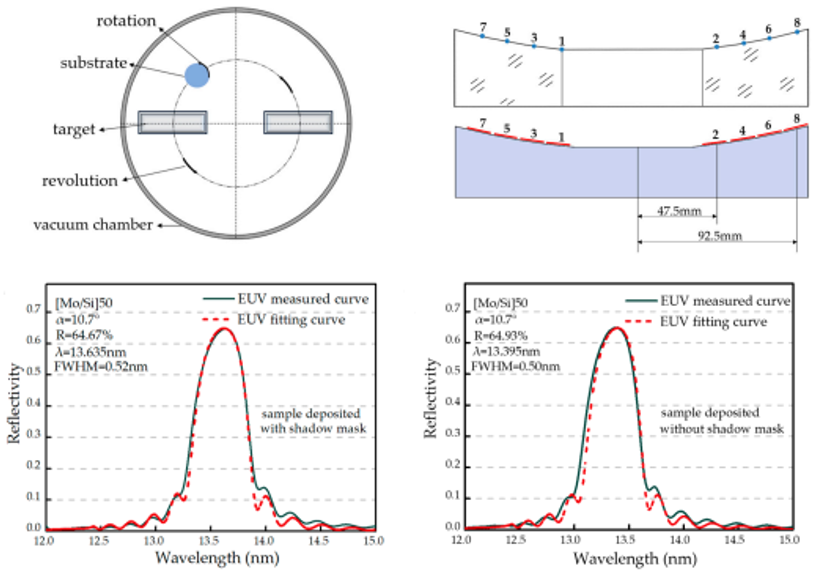
Fliters
Extreme ultraviolet filter films are widely used in EUV lithography, space exploration and other fields. Common filters include Zr, Si, Al, etc. However, due to their thickness generally less than 500nm, they are difficult to process and have long relied on imports from the United States. The key performance of filters such as transmittance, robustness, and uniformity still needs to be further improved. In addition, the transmittance of filters used in spectral instruments also needs to be known in order to further calculate the efficiency of the entire system. The transmittance and uniformity of filters can be measured using the Hefei Light Source Metrology Line Station.
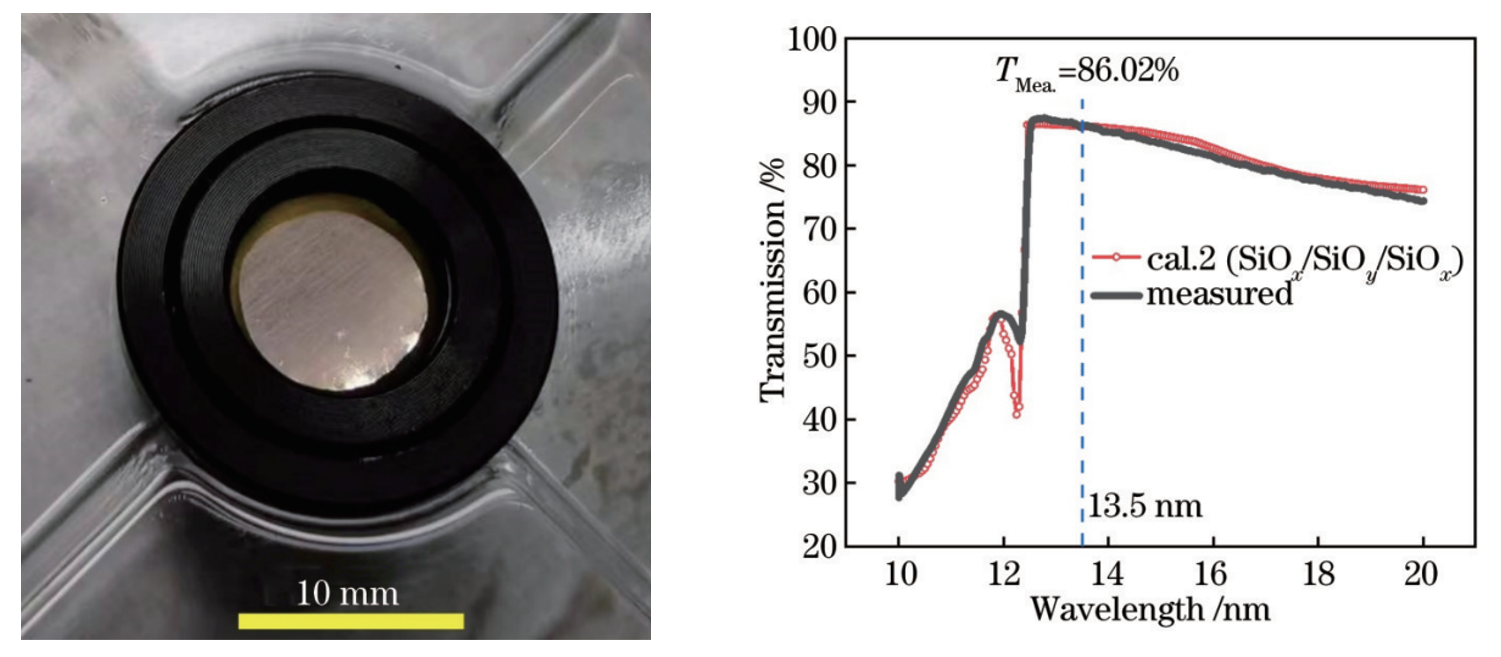
Gratings
Gratings are the most widely used spectroscopic elements in the 1-200nm band and are widely used in various spectral instruments and even large scientific facilities. The most critical performance of a grating is the diffraction efficiency of each level. High diffraction efficiency will improve the transmission efficiency of the entire optical system. Using a metrology line station, the diffraction efficiency of the grating can be measured, thereby helping to improve the performance of the grating.
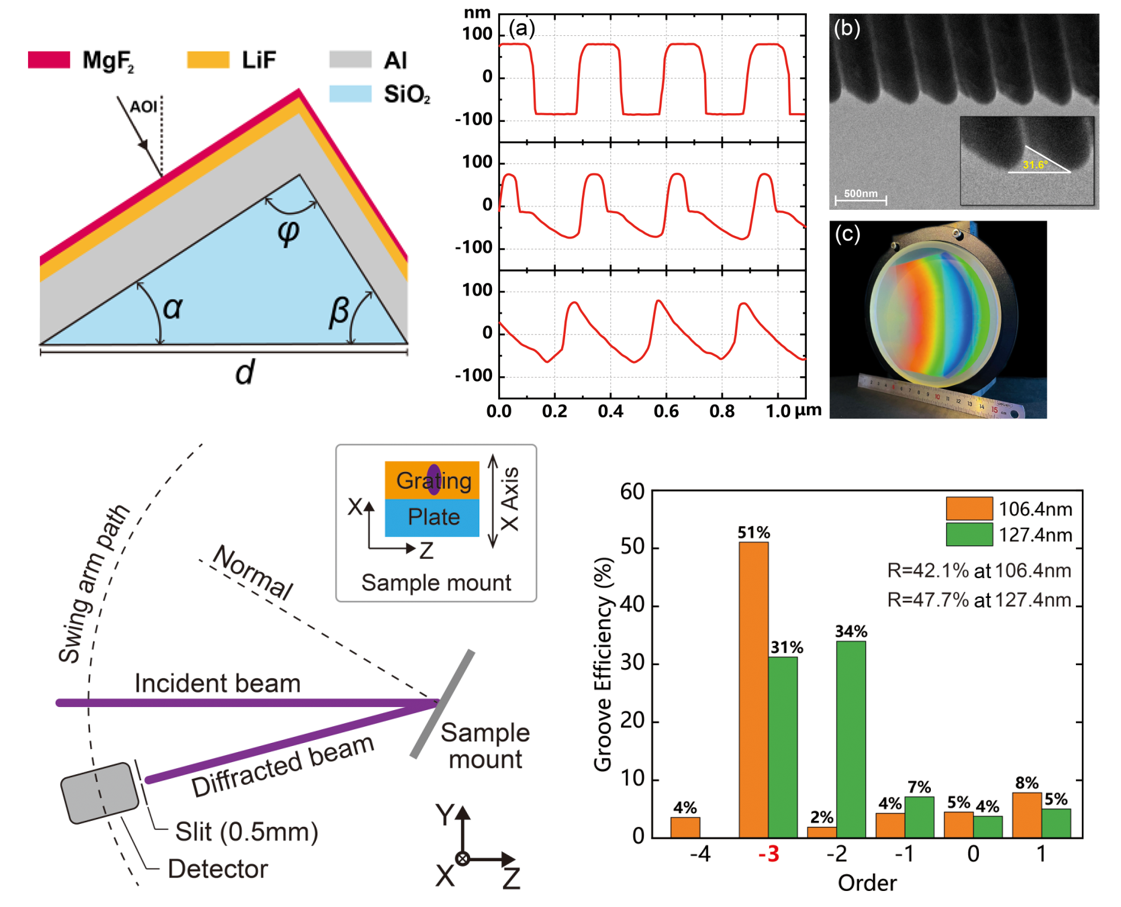
Ratiometry
new semiconductor photodetectors
High-performance extreme ultraviolet (EUV) detectors are key components urgently needed in the fields of new-generation EUV lithography machines, plasma physics, solar activity observations, and a series of large scientific facilities. At present, the mainstream EUV detectors in the world are all Si-based devices. However, due to the extremely shallow penetration depth of EUV photons in semiconductor materials and the high energy of photons, the detection efficiency of Si-based detectors in the EUV band is low and the device performance is prone to degradation. In order to obtain EUV detectors with high quantum efficiency, stability and radiation resistance, a variety of new semiconductors such as SiC, GaN, and Ga2O3 have great potential. Based on the metrology line station, the responsivity of the detector can be tested to further stabilize the detector process and then promote it to commercialization.
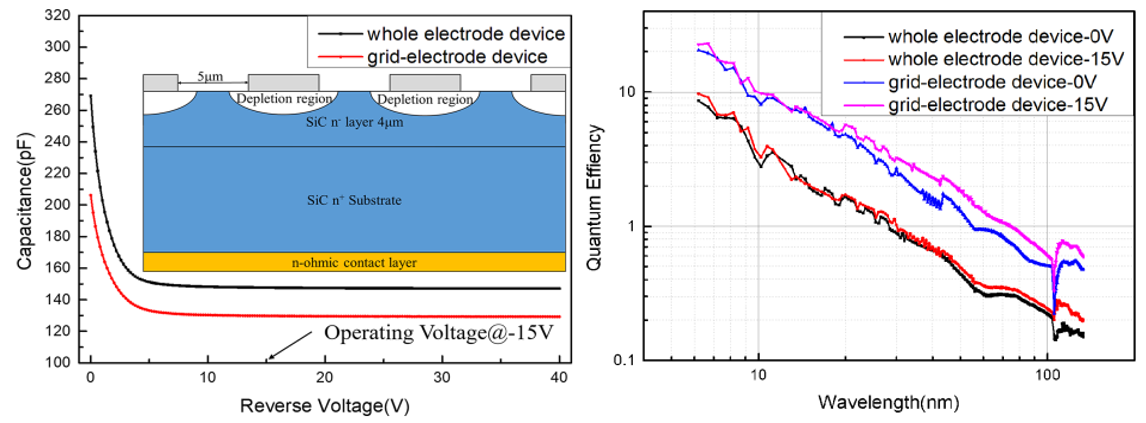
Space Exploration
Extreme ultraviolet spectral detection is one of the core means of space astronomical observation. It has a history of more than half a century in the United States, Japan, and Europe. However, there are still few extreme ultraviolet astronomical observations in my country. In 2013, the 30.4 nm extreme ultraviolet camera developed by the Changchun Institute of Optics, Fine Mechanics and Physics was one of the payloads of Chang'e 3. It successfully achieved imaging observations of the magnetosphere and plasmasphere on the lunar surface, and played an important guiding role in the study of the global dynamics of the Earth's plasmasphere. With the support of the Chinese Academy of Sciences' pilot project, the National Astronomical Observatory and Tongji University jointly developed a 46.5 nm solar extreme ultraviolet camera, carried out observations of the solar transition zone, and obtained the first image of the solar corona in nearly half a century. In the development process of these key payloads, it is necessary to accurately measure the optical components at the metrology line station and accurately calibrate the detectors used. These studies help to improve the performance of the detectors during the research and development stage and ensure the accuracy of the scientific data obtained after the flight.
In addition to direct spectral observation, ultraviolet pollution protection in other space explorations is also an important topic. Ultraviolet light pollution increases detector noise and affects the service life of related components. Therefore, the ultraviolet protection performance of the equipment needs to be verified at the beginning of the design. For example, the solar wind ion detector carried by Chang'e-1, the electronic analyzer carried by Yinghuo-1, and the X-ray pulsar navigation detector all conducted research on ultraviolet light pollution protection performance at the metrology line station before launch, which also requires accurate quantitative measurement of ultraviolet light.
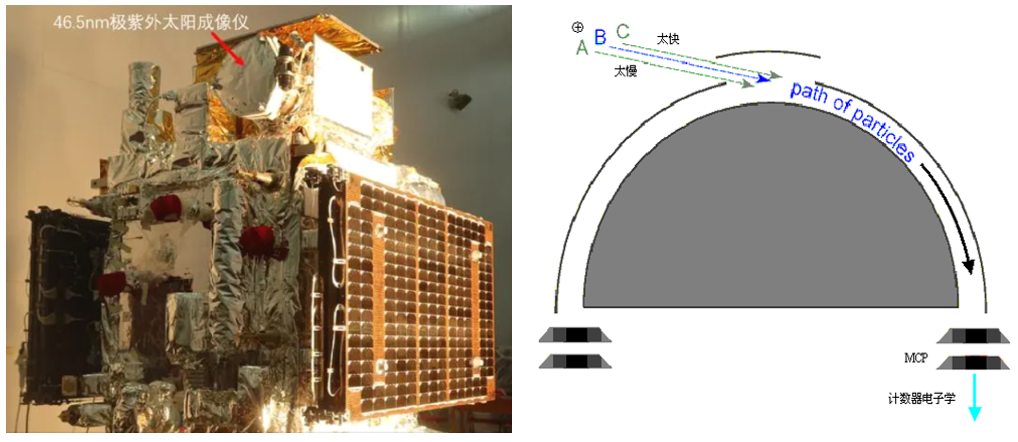
Back

